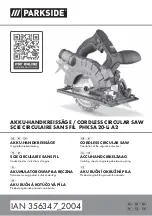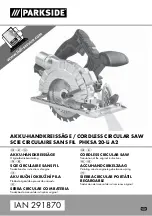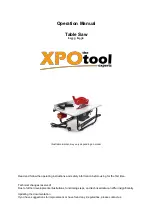
BA_PH_690-200_EN_11-22.docx
59
20.2
Rip Fence left to the Saw Blade
For cutting long, narrow parts such as cupboard
doors, the machine can be equipped with a “rip fence to the
left of the saw blade”
.
Structure and operation:
•
Move the cross-cut fence to the desired length
(max. 800 mm) and fix it in the rearmost position
of the cross slide and slide table.
•
Place the rip fence on the slide table and insert it
into the intended fastening groove (
A
) and guide
rail (
B
).
•
Move the rip fence into position and clamp it
using the toggle clamp lever (
C
).
Figure 65: Rip fence mounted to the left of the saw blade
Figure 66: Flip stop (left to the saw blade)
•
Move the flip stop on the rip fence to the di-
mension previously set on the cross-cut fence
(
•
Fix the stop plate by means of the toggle
clamp lever.
Dismounting takes place in reverse order.
20.3
Double-sided Mitre Fences DSG-A and DSG-D
With the double-sided mitre fences DSG-A and DSG-D, all tasks can be carried out quickly and steplessly when
making mitre cuts on narrow and short workpieces. Incorrect mitres can be quickly and easily calculated and
precisely set using the additional angle factor scale. Both types have length compensation for preferred angles
5/10/15/22.5/30/45/60/67.5° and are suitable for cutting to lengths up to 1375 mm.
Figure 67: DSG-A (analogue)
Figure 68: DSG-D (with digital indicator)
•
DSG-A
(Linear and angular measure = analogue)
→
Art. No. 4379
For operation and settings, see separate operating manual
BA_ST_DSG-A_EN
•
DSG-D
(Linear measure = analogue, angular measure = digital)
→
Art. No. 4380
For operation and settings, see separate operating manual
BA_ST_DSG-D_EN
A
B
C
















































